Carved Traces
Using wood and conductive paint to carve and paint conductive traces for circuitry.
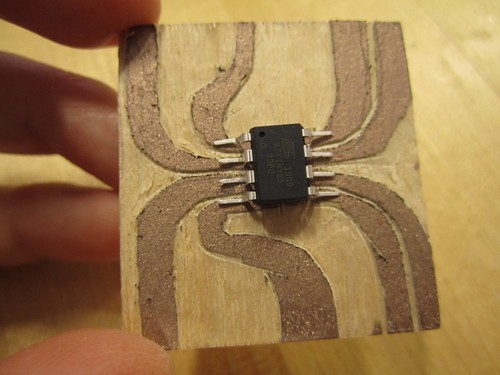
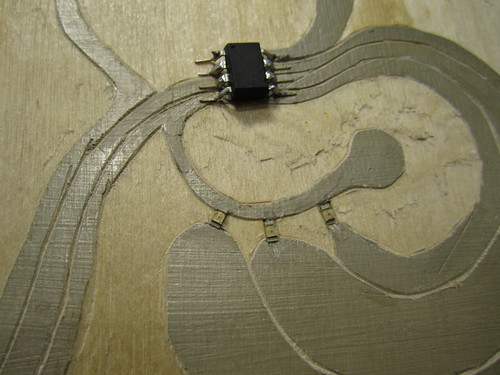
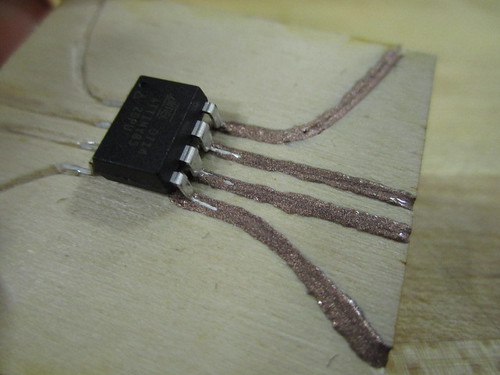
painting-then-carving
How circuit connections can be carved from a sheet of plywood that has been coated with a layer of conductive paint. First a flat piece of wood or plywood is sanded, primed and sanded again, creating an even and less absorbent surface. Then one or two layers of conductive paint are applied. There are a range of conductive paints that can be used, they vary in particle size, medium and conductor type. Silver paint is expensive, but highly conductive and applies beautifully. Copper paint is cheaper, but the particles are bigger and so narrow strips of carved material risk disconnection. Carbon paint has a much higher resistance to it that copper or silver, but is cheap in comparison and works like and acrylic paint.
The circuit is carved with a variety of carving tools, small grooves can be carved out for the smaller components to recede into, such as the surface mount LEDs. The components are superglued to the surface and additional silver paint is applied to bridge the connections between the painted wood traces and the component leads. The coin-cell battery holder was made by screwing two small screws into the wood, making contact with the conductive paint. The screws are spaced so that the battery press-fits between them.
Copper paint
>> http://lessemf.com/paint.html
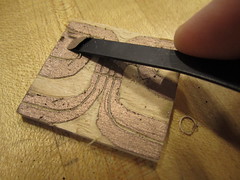
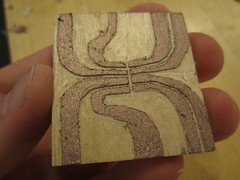
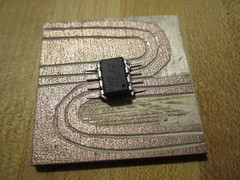
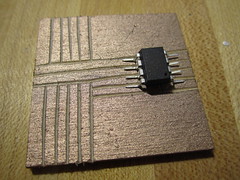
Samples of sanding, priming and carving wood circuits:
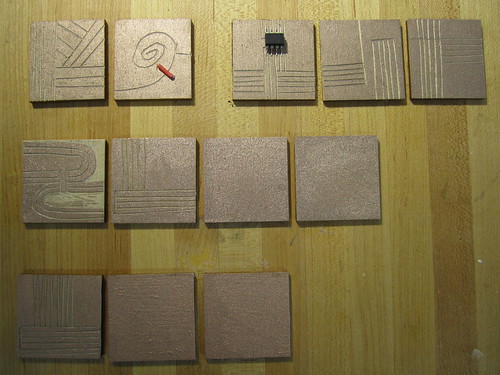
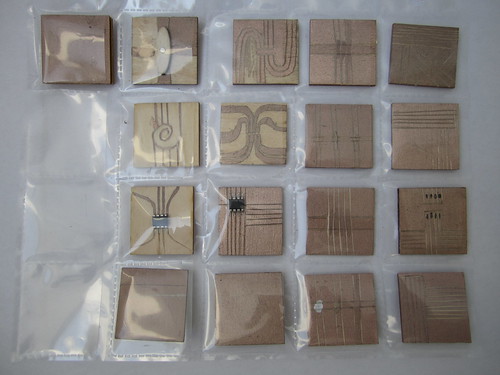
Isolating and jumping over carved traces:
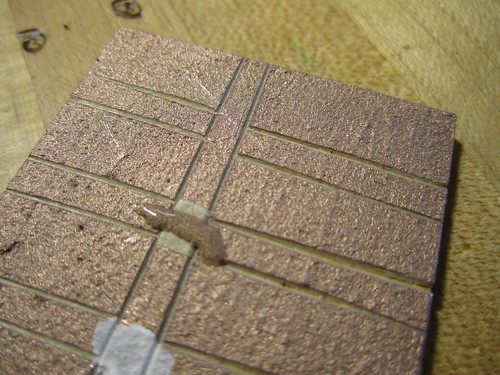
Silver paint
>> http://www.conductivecompounds.com/WB_101_Water_Based_Silver_Conductive_Ink.html
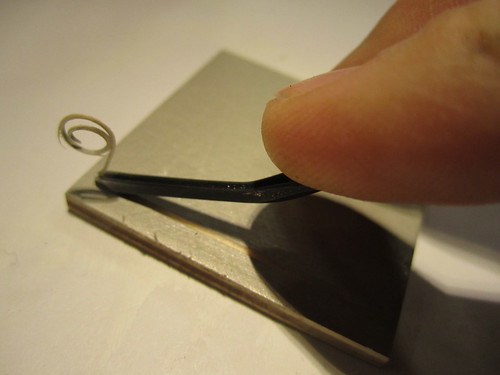
Isolating and jumping over carved traces. Unsuccessful and messy:


Coil-cell battery holder:

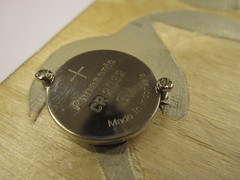
Interact through touch and skin resistance:
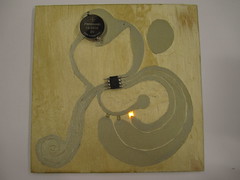
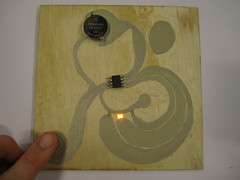
Interaction with the circuit toggles the LED lights on and off:

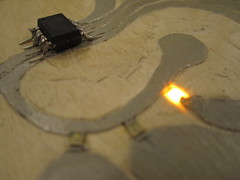
Video of carved circuit with skin-resistance toggle switch:
Carbon paint
>> http://lessemf.com/paint.html
Carving-then-painting
Copper paint
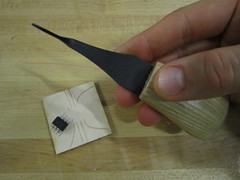




Saturate the carved channels with conductive paint:

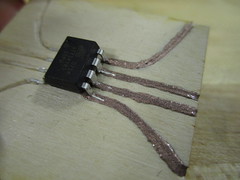
Careful carving tools are sharp!





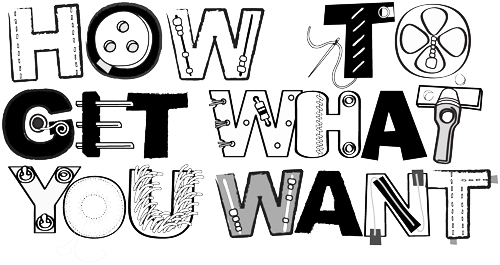

4 Comments so far
Leave a Reply